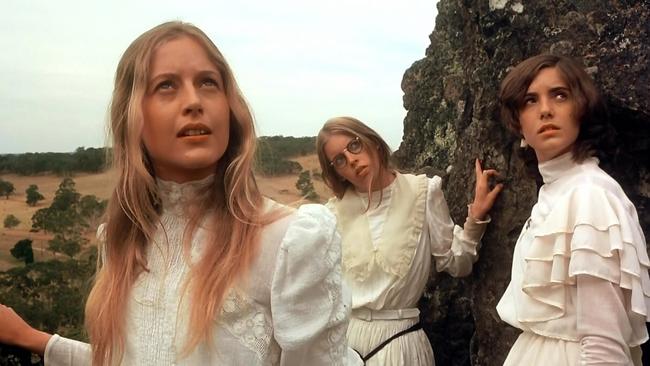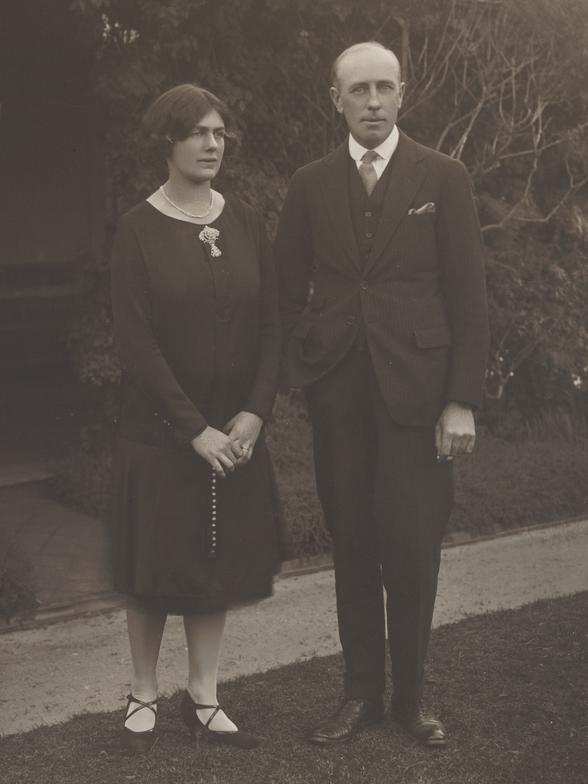The tantalising mystery of Picnic at Hanging Rock
My friendship with Lady Joan Lindsay lasted for years, with Joan playfully giving me hints as to the mystery of the missing Miranda at the Rock.

On arriving at our home for dinner with grumpy curmudgeon Sir Daryl, the fragile and intense Lady Joan Lindsay beamed delightedly and said: “This is my magic day! St Valentine’s Day! I met Daryl on St Valentine’s, we married on St Valentine’s. And yes, Picnic at Hanging Rock is set on St Valentine’s Day.”
(Daryl wasn’t happy. He was discomforted by my collection of Egyptian mummy cases. He’d always detested Ancient Egyptian art.)
The origins of our friendship were odd. I’d reviewed an exhibition of Norman Lindsay’s work for the ABC’s The Critics – decades before joining up – and found his nuddy paintings of women reminded me of drag queens. Though Norman was regarded as a sex-addicted satyr, in my blind ignorance I mumbled: “If I didn’t know better I’d suspect that Lindsay was homosexual.”

Next morning, at 9 sharp, my PA stage-whispered a warning. “A Lady Lindsay is on the line.” I picked up the phone expecting both barrels for my heresy. Instead a sweet voice said: “Daryl and I ALWAYS thought that!”
Our friendship would last for years with Joan playfully giving me hints as to the mystery of the missing Miranda at the Rock. Visiting their home, she’d point to the absence of clocks, saying she never wore a watch (“because they just stop”) and reminding me her autobiography was titled Time Without Clocks. And that the watch carried by the coachman driving the girls to the fateful picnic stopped ticking as they approached the Rock.
Years later I wrote a column about the “Ghosts of Versailles”, the story of two English schoolteachers who, on visiting the famous gardens, believed they’d been transported back in time to the days of Marie Antoinette. (This turned out to have an almost rational explanation, which I’ve explained in a previous column). Joan rang the next day to say: “That’s the book that inspired me to write Picnic!”
I also detected the influence of EM Forster’s novel about another fateful, fatal picnic in A Passage to India. And, another clue, I knew that Daryl, when boss of the National Gallery of Victoria, had a small painting hanging in his office depicting, yes, a picnic at Hanging Rock.
During the time when Peter Weir’s film became a phenomenon Joan would tease me with hints – or I’d phone seeking confirmation of a deduction. No time or space for all of this today – just a few clues. Leaving aside St Valentine’s Day, Joan’s obsession with clocks derived from the fact that she didn’t believe time was linear. She had come to the same counterintuitive conclusion as Einstein – that our sense of time is an illusion. She and the great scientist held that times past, present and future were in fact all-at-once.
Thus Miranda and her friends were not lost in space ... but in time. Thus Picnic at Hanging Rock is science fiction with parasols. Yet to this day many wrongly prefer to think Joan’s mystery was based on real events. In her mind the girls could walk down from the Rock tomorrow, as though nothing had ever happened, bewildered by the fuss. And I like to think that Joan herself could reappear at any moment – to laugh at us and at her own literary mischief-making.
Perhaps next St Valentine’s Day?




To join the conversation, please log in. Don't have an account? Register
Join the conversation, you are commenting as Logout